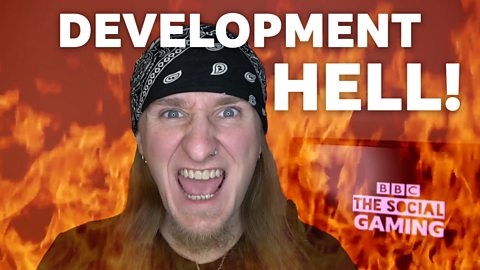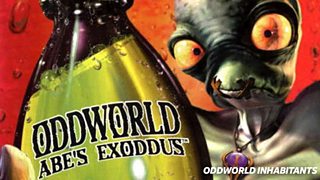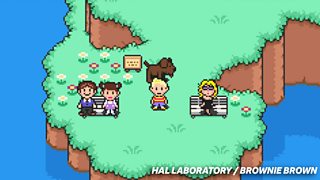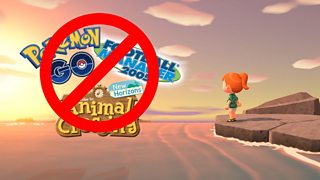Five games that went to development hell
By Andy McDonald // Βι¶ΉΤΌΕΔ The Social contributor // 21 December 2021
Video games are arguably the most immersive form of modern media. From stunning visuals and evocative musical scores to gripping gameplay and unforgettable stories, they’re truly testament to what teams of dedicated creators can achieve.
But it isn’t always that simple. Sometimes the process of making a game goes off the rails - be it due to too many cooks, inexperienced developers, stakeholder stubbornness or otherwise - and this can lead to a period of slow progress or inactivity commonly known as development hell. Here are five such games that have felt its flames - but did they burn to cinders or rise like a phoenix?

5 Games That Went To Development Hell!
Some games get stuck in development hell and don’t always live to tell the tale.
Body Harvest
In 1994, Dundee-based game company DMA Design - now Rockstar North, and perhaps best known for Grand Theft Auto - were made part of Nintendo’s prestigious dream team of developers, tasked with creating sci-fi action-adventure Body Harvest for the Nintendo 64.
It soon transpired, however, that the patronage of the Big N was something of a poisoned chalice and a language barrier and cultural differences between the Scottish and Japanese offices left DMA following such nebulous instructions as making the graphics “more material”.
Rather than incur the wrath of Shigeru Miyamoto et al, the team followed orders as best they could. Nonetheless, it was eventually dropped for not being family-friendly enough before being picked up by a more understanding publisher. In an article for Nintendo Life, DMA staffer Steve Hammond said the project had “perfectly embodied the filmic notion of development hell.”
Oddworld: Abe’s Exoddus
Oddworld: Abe’s Oddysee was one of the best-selling games for the original PlayStation in the ‘90s. It was only natural then, that publisher GT Interactive would push for a sequel. The problem? They wanted one in time for the holiday season the following year, giving developers Oddworld Inhabitants only nine months to make one.

This “brutal” gestation period for Abe’s Exoddus saw the team “kill themselves”, as director Lorne Lanning told Gog.com, unable to say no to the publisher that owned 50% of the company. Despite the game being a rushed offshoot to the main Oddworld series using the same engine and assets as Oddysee, it was critically acclaimed upon release - most probably to a collective sigh of relief from the devs.
Nintendo’s The Legend of Zelda: Majora’s Mask shares a similar history - with a shorter time to create a sequel to the award-winning Ocarina of Time, its smaller team largely reused that game’s materials to tell a Wizard of Oz-style story about a parallel world. It too, came to be heralded as a classic. Pressure can crush - but in these instances, it made a diamond.
Metroid Dread
Sometimes rather than spiralling out of control mid-development, a project never really gets off the starting blocks. Game concepts that linger in the ether without any tangible form are often known as vapourware, the fabled Half-Life 3 being a prime example of this.
Another one was Metroid Dread, the latest installment in Nintendo’s classic alien action-shooter. Before its surprise reveal and release this year, it spent 16 years as little more than an idea. Despite attempts to get the Morph Ball rolling, the technology wasn’t quite there for what producer Yoshio Sakamoto had hoped to achieve and Dread was continually called off to the point that Ugo.com included it in a list of “video games you will never, ever play” in 2011. Ten years later, Samus Aran’s latest outing finally surfaced to fervent celebration. Perhaps there’s hope for Half-Life yet.
Mother 3
It isn’t only games that suffer development hell - it can happen to consoles too. The Nintendo 64DD was a disk drive add-on that would bestow the iconic console with greater storage and online connectivity.

Despite being announced in 1995 - before the launch of the actual Nintendo 64 - it wouldn’t surface until the end of 1999 to complete commercial failure. Several of its games were shifted to the base console but Mother 3 wasn’t so lucky. The sequel to the irreverent SNES RPG EarthBound (known as Mother 2 in Japan) didn’t survive the transition to 3D gaming due to inexperienced staff and was canned at the turn of the century.
It eventually arose as a two-dimensional title on the Game Boy Advance in 2006, by which time its production had spanned 12 years and three consoles. The sting in the tail, though, was that it was only ever released in Japan, leaving a vast cult following of Western fans still waiting for an official localisation 15 years later.
Star Citizen
Of course, some games are still in a state of developmental limbo, perhaps none more so than Star Citizen. This ambitious space simulation MMO has become the most highly crowdfunded video game to date, raising an eye-watering $400 million from backers and investors since 2012. This has led to widespread coverage - positive and otherwise.
As much as independent projects enjoy greater creative freedom, Kotaku once described the game as “an extraordinary insight into what the process of game development can turn into without intervention and control from publishers or financial stakeholders.” Some have even gone as far as to call it a Ponzi scheme. Whether the game ever sees a full release or not, one thing’s for sure - it’s got some astronomical expectations to live up to.




